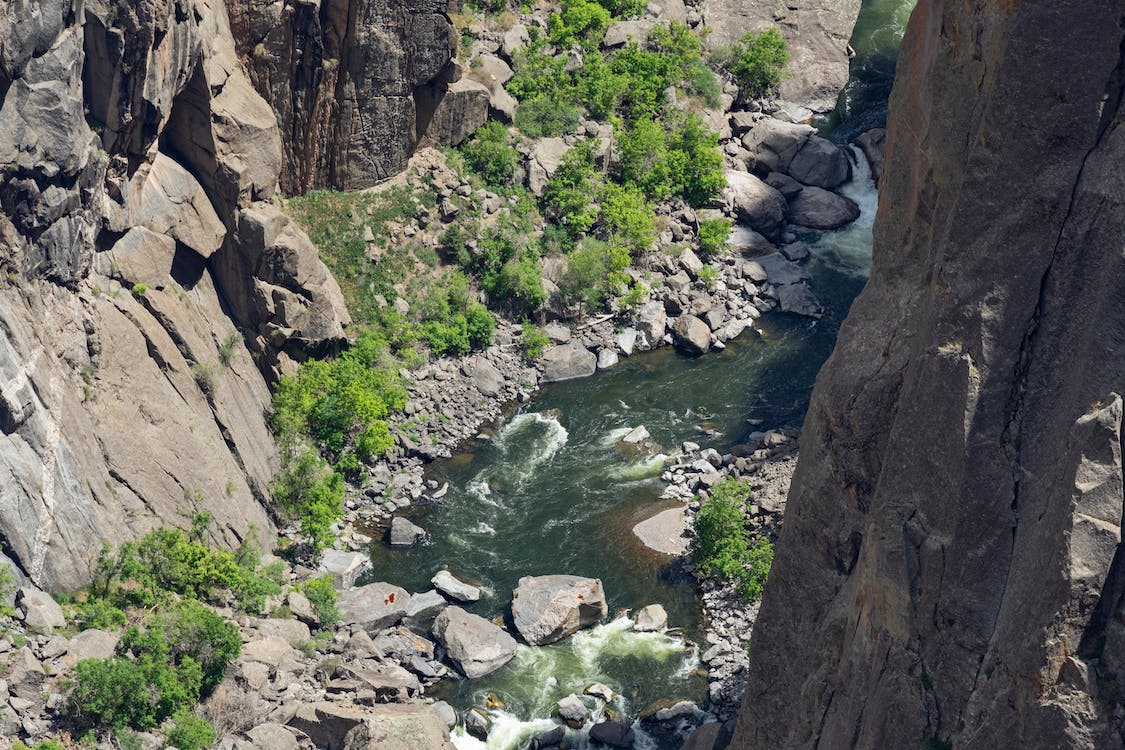Encompasses a deep, narrow gorge 15 miles east of Montrose, this natural area in western Colorado is called the Black Canyon of the Gunnison National Park. Its hugeness is overwhelming but still intimate enough to feel the pulse of time, Black Canyon of the Gunnison is home to some of the oldest rock, steepest cliffs, and craggiest spires in North America. After about two million years, the Gunnison River, along with weathering forces, has sculpted this vertical wilderness of rock, water, and sky.
In 1933, it was established as a national monument and was elevated to national park status in 1999. It occupies 47 square miles (122 square km) with Curecanti National Recreation Area borders it to the southeast. Black Canyon is home to the Peregrine falcons or the fastest bird in the world. According to scientists, these Peregrines can reach speeds of over 200 mph in a high dive.
There is abundant Poison Ivy at the Black Canyon’s bottom region. They can grow over 5 feet tall along the Gunnison River. The Gunnison River cuts through the canyon and its tributaries. The steepest part of the canyon is at 10 miles (16 km) long with depths ranging from 1,730 to 2,425 feet (525 to 740 meters), while its rim width narrows to 1,300 feet (400 meters) and its floor width to 40 feet (12 meters).
Its walls are black-stained and covered with lichen, that’s where it got its name Black Canyon. The north and the south rims roads with overlooks, and foot rails reach 8000 feet above sea level. There are more visitors at the South rim because it’s more accessible. Among the most beautiful spots are the block “islands” and pinnacles that form the canyon.
The park is home to bobcats, coyotes, cougar, mule deer, foxes, raccoon, and various species of birds including the American dipper, two species of eagle, eight species of hawk, six species of owl, and Steller’s jay as well as migratory birds such as the mountain bluebird, peregrine falcon, magpie, white-throated swift and canyon wren. There are a variety of plant species mostly native to the park. Some are aspen, Ponderosa pine, sage bush, desert mahogany, (Cercocarpusledifolius), Utah juniper, Gambel oak (scrub oak) and single-leaf ash.
HISTORY
Before the Europeans saw the canyon, the Ute Indians had known it already for a long time, and they refer to it as “much rocks, big water.” The avoided the canyon because of their superstition.
During the United States Independence declaration in 1766, two Spanish expeditions had passed by the canyon. In the search for the beaver pelts, numerous fur trappers would have known the canyon’s existence in the 1800s, but they have not made any written record until Captain John Williams Gunnison in 1853 made the first official account of the Black Canyon. He led an expedition to survey a route from Saint Louis and San Francisco. According to Captain Gunnison, the country has “the roughest, most hilly and most cut up,” It skirted the canyon south towards present-day Montrose. After his death, the Ute Indians later named the river in honor of Captain Gunnison, who had called the river Grand.
ACTIVITIES
Drive through a Time Portal
Via the East Portal, you can drive down into the canyon. This paved road is very steep and has many switchbacks. You can grab a brochure of the East Portal history that tells about the incredible engineering feat that turned Montrose into fertile farmland from the visitor center. Leave your RVs at the top and take your vehicle down into the canyon.
Visit the North Rim
The Black Canyon of the Gunnison’s north rim is less developed than the south. You cannot find any visitor center, and the ranger station is occasionally staffed. There are less traffic and more incredible views at the North rim just two hours from the South rim. It has beautiful trails, sheerer cliffs, and fewer visitors.
Fishing
Designated as the Gold Medal Waters and Wild Trout Water, the Gunnison River of the Black Canyon is best for fishing enthusiasts, and visitors. Secure a license in Montrose and try your hand from East Portal, and rent a boat. The nearby Blue Mesa Reservoir provides an excellent lake trout fishing experience.
The East Portal road, which is the most accessible to the river, is closed during winter. Fishing within 200 yards downstream of Crystal Dam is prohibited.
Camp in the Canyon
Just next to the Gunnison River, the East Portal campground is truly a unique site for a camping experience. But if you want some intense adventure, you can hike the river from the canyon rim. You will be thrilled by the steep journey, with no marked trails, often quite a scramble and frequent hazards, including poison ivy, ticks, and stinging nettle. Secure a backcountry permit at the visitor center and bring a lot of water, especially at the summer peak. For the first-timers, the Gunnison Route is more recommendable as it only takes two or more hours to hike down and three or more hours to hike back up. There is also a backcountry camping once you reach the canyon floor.

